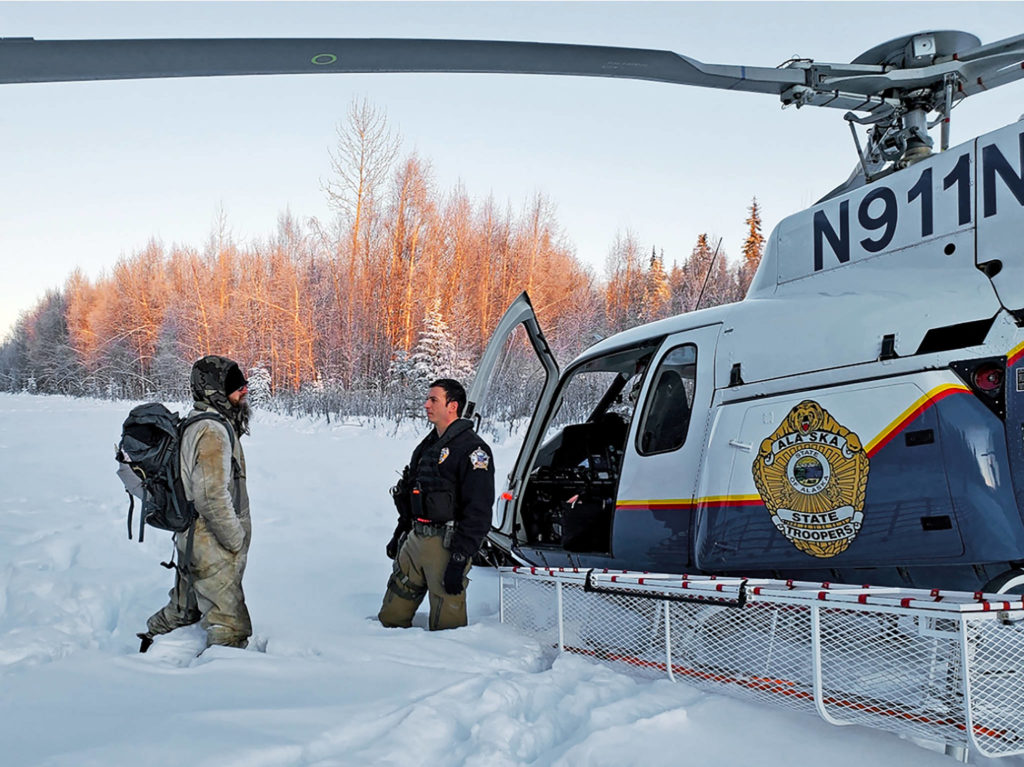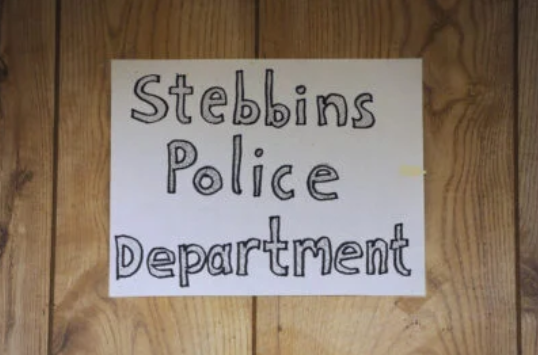Victims of terrain: Alaska Native Women
THE PHYSICAL ENVIRONMENT AND VASTNESS OF ALASKA IS SUCH THAT ISOLATED VILLAGES, WHERE THERE ARE NO ROADS IN OR OUT, ARE COMMONPLACE. THIS HAS BEEN ONE OF THE LARGEST FACTORS AT PLAY IN THE MURDER, RAPE, AND “MISSING” STATUS OF ALASKAN NATIVE WOMEN. This exhibit is dedicated to exploring the dilemma of MMIW in alaska.
“sometimes I think they forget how big Alaska is"
“When someone goes missing in Alaska, search areas can be as large as entire states in the Lower 48, and considerably more treacherous. Alaska encompasses 39 mountain ranges, 12,000 rivers, 100,000 glaciers, and 3 million lakes. The mudflats can be like quicksand; ice and snow can erase a person’s last traces. Landslides, avalanches, fissuring glaciers, overflowing rivers, and collapsing riverbanks all make travel unpredictable at best.” – Alex Tizon, April 2016

Alaska spans 586,400 sq mi
Population: 731,545 (2019)
Upwards of 80% of Alaska is not accessible by the road system
Alaska has the most missing persons of all states in the US (Native & Non-Native)

Alaska’s Indigenous Peoples are roughly 19% of the state’s population, but are 47% of reported rape victims
Most Alaskan Native communities are organized into villages
There are 229 federally recognized Alaska Native villages
56% of Alaska Native women will have experienced physical or sexual violence in their lifetime

“I am the closest unit, and I’m 17 miles away”
Alaska operates on a two-tiered justice system in which large cities (mostly non-white) have their own police departments and other villages (mostly Native) are dependent on state police – who are often a plane ride away. Despite the reports of rampant domestic abuse and violence against women in many of these villages, most of the places without police receive no funding because they are considered too small or too remote to employ local police.

“If we shoot a moose, or shoot a deer, or any other wildlife, there’ll be a whole group of wildlife troopers who show up within hours. They’ll come on their own planes. They have helicopters and boats... But if someone gets killed, we have to wait.” - Joel Jackson, Kake, AK Tribal Council President
As of 2013, at least 75 Alaskan Native communities did not have law enforcement offices (Indian Law and Order Commission). The Tribal Law and Order Commission found that “Alaska Department of Public Safety (ADPS) officers have primary responsibility for law enforcement in rural Alaska.” But ADPS has provided only 1.0-1.4 field officers per million acres. Alaska State Troopers are currently at “critically low levels”
Alaska also lacks a unified 911 system, making
access to police even harder in rural areas. Some, but not all, towns have VPSOs (Village Public Safety Officers), but their powers are limited. They aren’t allowed to carry guns or make arrests, and the positions are hard to fill. In 2017 there were only 53 VPSOs. These positions remain largely unfilled due to a lack of funding from the state. The corporations in Alaska are not obligated to provide funding for law enforcement issues, so the vacancies continue to climb. Complex jurisdictional issues also complicate policing, leaving people in some native communities unsure of who to call for help.


State troopers are meant to be a rural police force, but many are stationed in Suburban and urban areas that are to far from rural areas. As a result, many troopers find themselves flying out to villages as needed and patrolling areas as large as 20,000-square-miles. This is primarily due to highly populated, white areas not wanting to take on the tax burden of a police department. Thus, these communities end up receiving the brunt of the state troopers.
“He Was Our Only Applicant"
Because of the lack and absence of law enforcement in Alaska’s rural Native communities, there has been a rise in the unique situation of village police officers who have criminal records. A situation that has been well captured by the seven officers in Stebbins, Alaska – who all have criminal records.
*click image on right to read more*
There are at least 14 cities in Alaska that have employed police officers whose criminal records should have prevented them from being hired under Department of Public Safety regulations. The news organizations Daily News and ProPublica identified more than 34 officers who should have been ineligible for these jobs. In all but three cases, the police hires were never reported by the city governments to the state regulatory board, as required. In eight additional communities, local tribal governments have hired tribal police officers convicted of domestic violence or sex crimes.
“It’s outrageous that we have a situation where we have a, such a lack of public safety that communities are resorting to hiring people who have the propensity for violence, and placing them in a position where they have control over people and possibly could victimize the victims further.”
– Melanie Bahnke, a board member for the Alaska Federation of Natives, which represents 191 tribes

"My mom always tells me to wear two pairs of jeans at night to slow him down"
The reality of the lack of law enforcement on top of the remoteness and isolation of villages is not lost on the Alaskan Native women who are reminded every day and night that they are surrounded by victims, survivors, and predators.
Even when Alaska Native women do stand up to their abusers, the system is against them. Dozens of Alaska Native communities have no law enforcement presence, which forces some sexual assault victims to take boats or planes to urban areas for forensic exams. And even in communities that have hospitals, the lack of law enforcement caused barriers for domestic and sexual abuse victims wanting to seek justice. This more often than not results in Alaskan Native girls seeing those who raped them walk free in small villages. And in the event they report the crime to a police officer and go to a hospital to be tested, many women report officers telling nurses not to bother and not investigating rapes. This is especially prominent in towns like Nome, AK – where half of the 4,000 people are Native but all of the police officers are non-Native.
In Kake, AK a 13 yr old native Tlingit girl had been beaten to death and left on the back entryway of a church. She laid there for 11 hours after villagers called the Alaska State Troopers for help. The community (with no law enforcement officer) gathered to guard Mackenzie’s body and the crime scene that night while they waited. The closest state troopers were in Juneau, 114 miles away.

Stories from Tanana, a village of 254:
“Everyone knew the local elder who’d molested and raped his daughters and granddaughters for decades until he was arrested for touching another family’s girls; after four years in jail and another half dozen or so at a cabin downriver, he was back on the village tribal council.”
“When a young man from Tanana was accused of sexually abusing several village children a few years ago, some of his relatives verbally attacked the woman who turned him in, saying, “Shame on you. He had his whole life in front of him and you’re going to ruin it.””
The wait for law enforcement is not a unique event. In some instances, law enforcement never comes.
In Emmonak, AK a 19 yr old Alaska Native woman in this icebound fishing village of 800 “… was sleeping when an intruder broke into her home and raped her. The man left. Shaking, the woman called the tribal police, a force of three. It was late at night. No one answered. She left a message on the department’s voice mail system. Her call was never returned. She was left to recover on her own.”
“It compounds the trauma if you are willing to stand up and testify and they can’t help you.”
– Sarah Deer
Victims of Terrain: Alaska Native Women
Curated by Shalyn Peterbark – Under the guidance of Dr. Elizabeth Rule
April 2020 – AMST 320 – American University
Works Cited
Bartosch, J. (2019, February 26). Why Are So Many Indigenous Women in Alaska Coming Up Missing and Murdered? Retrieved from https://www.aetv.com/real-crime/missing-murdered-indigenous-women-native-alaska-other-states
Bernard, S. (2014, August 21). Rape Culture in the Alaskan Wilderness. Retrieved from https://www.theatlantic.com/health/archive/2014/09/rape-culture-in-the-alaskan-wilderness/379976/
Hopkins, K., & Anchorage Daily News. (2018, July 19). Cops in One Village Have Been Convicted of 70 Crimes. Here’s What… Retrieved from https://www.propublica.org/article/cops-in-stebbins-alaska-have-been-convicted-of-70-crimes-heres-what-they-had-to-say-about-it
Hopkins, K. (2019, December 5). These Cops are Supposed to Protect Rural Villages. They’re in the… Retrieved from https://www.propublica.org/article/looking-for-alaskas-rural-police-force-check-the-suburbs
Hopkins, K., & Anchorage Daily News. (2019, July 18). The Village Where Every Cop Has Been Convicted of Domestic Violence. Retrieved from https://www.propublica.org/article/stebbins-alaska-cops-criminal-records-domestic-violence
Horwitz, S. (2014, August 2). In remote villages, little protection for Alaska Natives. Retrieved from https://www.washingtonpost.com/sf/national/2014/08/02/in-rural-villages- little-protection -for-alaska-natives/?utm_term=.70a66b13757d
Jerue, T. Homeland Security Digital Library, Homeland Security Digital Library (2019). Retrieved from https://www.congress.gov/event/116th-congress/house-event/109101
Mckenzie, V. (2019, September 14). In Alaska hometown, Native women say police ignored rapes. Retrieved from https://apnews.com/25c397c5bba040d2ad507faf47d07255
McLaughlin, K. (2018, September 5). Dozens of Alaskan native communities have no law enforcement, forcing sexual assault victims to take planes and boats for forensic exams. Retrieved from https://www.insider.com/alaskan-native-communities-no-law-enforcement-sexual-assault-cases-2018-9
Tizon, A. (2017, August 29). In the Land of Missing Persons. Retrieved from https://www.theatlantic.com/magazine/archive/2016/04/in-the-land-of-missing-persons/471477/
Walker, R. (2017, September 7). 10 Things You Should Know About Alaska Natives. Retrieved from https://indiancountrytoday.com/archive/10-things-you-should-know-about-alaska-natives-I2JrTDNWiUyeX8r4QRiKlg
Williams, T. (2012, May 23). For Native American Women, Scourge of Rape, Rare Justice. Retrieved from https://www.nytimes.com/2012/05/23/us/native-americans-struggle-with-high-rate-of-rape.html


